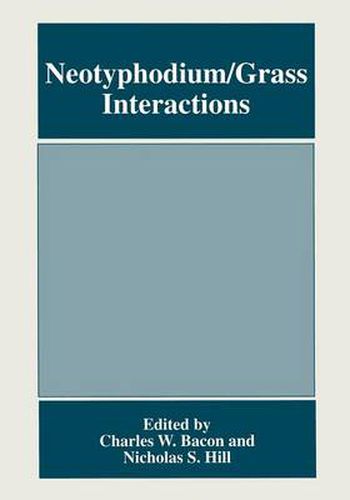Readings Newsletter
Become a Readings Member to make your shopping experience even easier.
Sign in or sign up for free!
You’re not far away from qualifying for FREE standard shipping within Australia
You’ve qualified for FREE standard shipping within Australia
The cart is loading…






This title is printed to order. This book may have been self-published. If so, we cannot guarantee the quality of the content. In the main most books will have gone through the editing process however some may not. We therefore suggest that you be aware of this before ordering this book. If in doubt check either the author or publisher’s details as we are unable to accept any returns unless they are faulty. Please contact us if you have any questions.
Endophytic fungi belonging to the Balansieae tribe were first hypothesized to cause poor livestock performance in 1977 and, in 1980, the association was validated. The fungi were extensively studied and classified according to morphology, their life cycles exam- ined to determine methods to eliminate the fungi in grasses, and practical methods devel- oped for livestock producers to eliminate endophyte-infected plants from pastures and establish endophyte-free plants. Hindsight illustrates how primitive was our understanding of the associations between endophyte, grass plant, and animal. The plant/endophyte asso- ciations, thought to be rare cases, have now been identified in grasses that are adapted from tropical to nearly arctic, and from marshland to desert climatic regimes. In the two decades that have passed since the first endophyte-plant-animal associa- tion was made, the scientific community has re-classified the endophytic fungi twice (now the genus Neotyphodium), ~he systematics and ecological role of endophytes have been more clearly defined, endophytes and grasses are now generally accepted as mutualistic symbionts, the chemistry of toxins and their functions defined, beneficial effects of endo- phytes on plants identified, and commercial ventures have emerged based upon endophyte research in the turfgrass and livestock industries.
$9.00 standard shipping within Australia
FREE standard shipping within Australia for orders over $100.00
Express & International shipping calculated at checkout
This title is printed to order. This book may have been self-published. If so, we cannot guarantee the quality of the content. In the main most books will have gone through the editing process however some may not. We therefore suggest that you be aware of this before ordering this book. If in doubt check either the author or publisher’s details as we are unable to accept any returns unless they are faulty. Please contact us if you have any questions.
Endophytic fungi belonging to the Balansieae tribe were first hypothesized to cause poor livestock performance in 1977 and, in 1980, the association was validated. The fungi were extensively studied and classified according to morphology, their life cycles exam- ined to determine methods to eliminate the fungi in grasses, and practical methods devel- oped for livestock producers to eliminate endophyte-infected plants from pastures and establish endophyte-free plants. Hindsight illustrates how primitive was our understanding of the associations between endophyte, grass plant, and animal. The plant/endophyte asso- ciations, thought to be rare cases, have now been identified in grasses that are adapted from tropical to nearly arctic, and from marshland to desert climatic regimes. In the two decades that have passed since the first endophyte-plant-animal associa- tion was made, the scientific community has re-classified the endophytic fungi twice (now the genus Neotyphodium), ~he systematics and ecological role of endophytes have been more clearly defined, endophytes and grasses are now generally accepted as mutualistic symbionts, the chemistry of toxins and their functions defined, beneficial effects of endo- phytes on plants identified, and commercial ventures have emerged based upon endophyte research in the turfgrass and livestock industries.